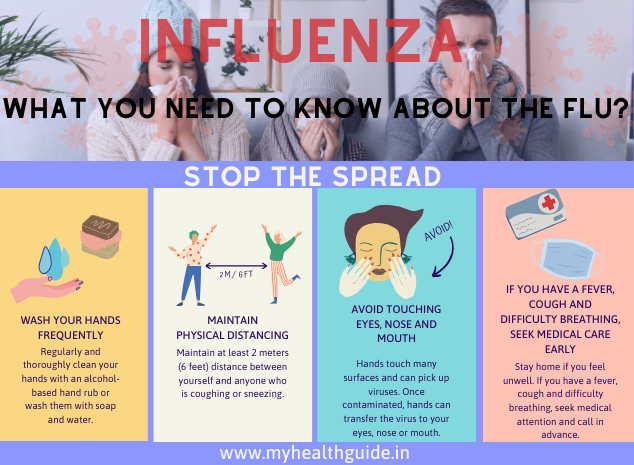Let’s dive into the nitty-gritty of this contagious bug and uncover what makes it tick.
Imagine the flu as an uninvited guest that overstays its welcome. Symptoms often include fever, cough, sore throat, body aches, fatigue, and more. It’s like a full-blown orchestra of discomfort.
While most people recover within a week or two, severe cases can lead to complications, especially for vulnerable populations.
Influenza is a social butterfly, spreading from person to person through respiratory droplets produced when an infected person talks, coughs, or sneezes. Touching a surface with the flu virus and then touching your face can also lead to infection.
It’s a stealthy culprit, so proper hand hygiene and vaccination are our best defenses.
Speaking of defenses, getting a flu shot is like giving your immune system a superhero suit. The vaccine not only protects you but also helps prevent the virus from spreading within your community.
Good hand hygiene, staying home when sick, and practicing respiratory etiquette also play crucial roles in preventing the flu’s spread.
Unfortunately, there’s no magic cure for the flu. Rest, hydration, and over-the-counter medications can help alleviate symptoms, but antiviral drugs prescribed by a healthcare professional are the real superheroes in fighting the flu.
Early intervention is key, so don’t hesitate to seek medical advice if you suspect influenza.
Think of herd immunity as a shield that protects our communities. When a significant portion of the population is vaccinated, it creates a barrier, making it difficult for the virus to spread.
This protection is especially vital for those who cannot receive the vaccine, such as infants and individuals with certain medical conditions.
The influenza virus, much like a shapeshifter, constantly changes its appearance. This ability to morph is why predicting and preventing the flu can sometimes feel like trying to hit a moving target.
Scientists work tirelessly to identify the prevalent strains each year, crafting vaccines that act as a shield against the specific viruses expected to circulate.
You may wonder why we need a new flu vaccine every year. Well, the influenza virus is a master of disguise, undergoing genetic changes to escape our immune system’s recognition. This is where the annual vaccine comes into play.
By staying ahead of the curve and targeting the most likely strains, scientists aim to provide the best possible defense against this elusive foe.
Influenza is not a one-size-fits-all virus. It’s divided into three types: A, B, and C. Type A is the most common and notorious, responsible for seasonal outbreaks and pandemics. Type B generally causes milder illness, while Type C leads to mild respiratory symptoms.
Within these types, there are various subtypes and strains, making each flu season unique.
Picture this: you’re at a crowded event, and someone nearby unleashes a mighty sneeze. The invisible cloud of virus-laden droplets hangs in the air, ready to find its next host. This scenario captures the social dynamics of influenza transmission.
Understanding how the virus moves from person to person helps us implement effective preventive measures, such as mask-wearing and maintaining physical distance during peak flu seasons.
The recent pandemic has brought a heightened awareness of respiratory viruses, and the interplay between influenza and COVID-19 adds a layer of complexity. Both illnesses share similar symptoms, making it crucial to differentiate between the two.
The good news is that many preventive measures, like vaccination and good hygiene practices, can help protect against both viruses.
As we navigate the ebb and flow of flu seasons, it’s essential to stay informed and adapt our strategies. Monitoring public health advisories, getting vaccinated, and fostering a culture of responsibility contribute to a collective defense against the flu.
By embracing a proactive approach, we empower ourselves and our communities to minimize the impact of influenza.

